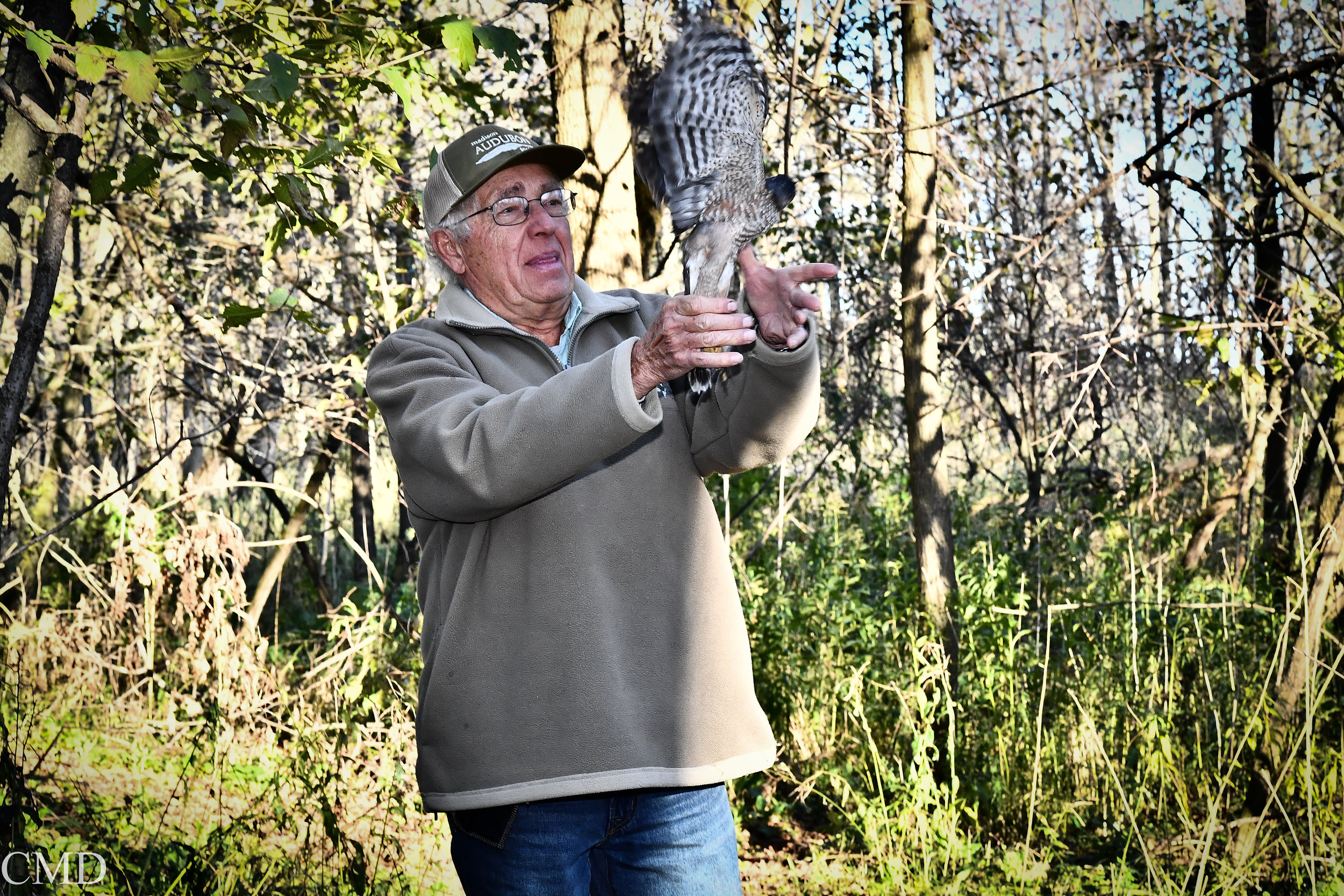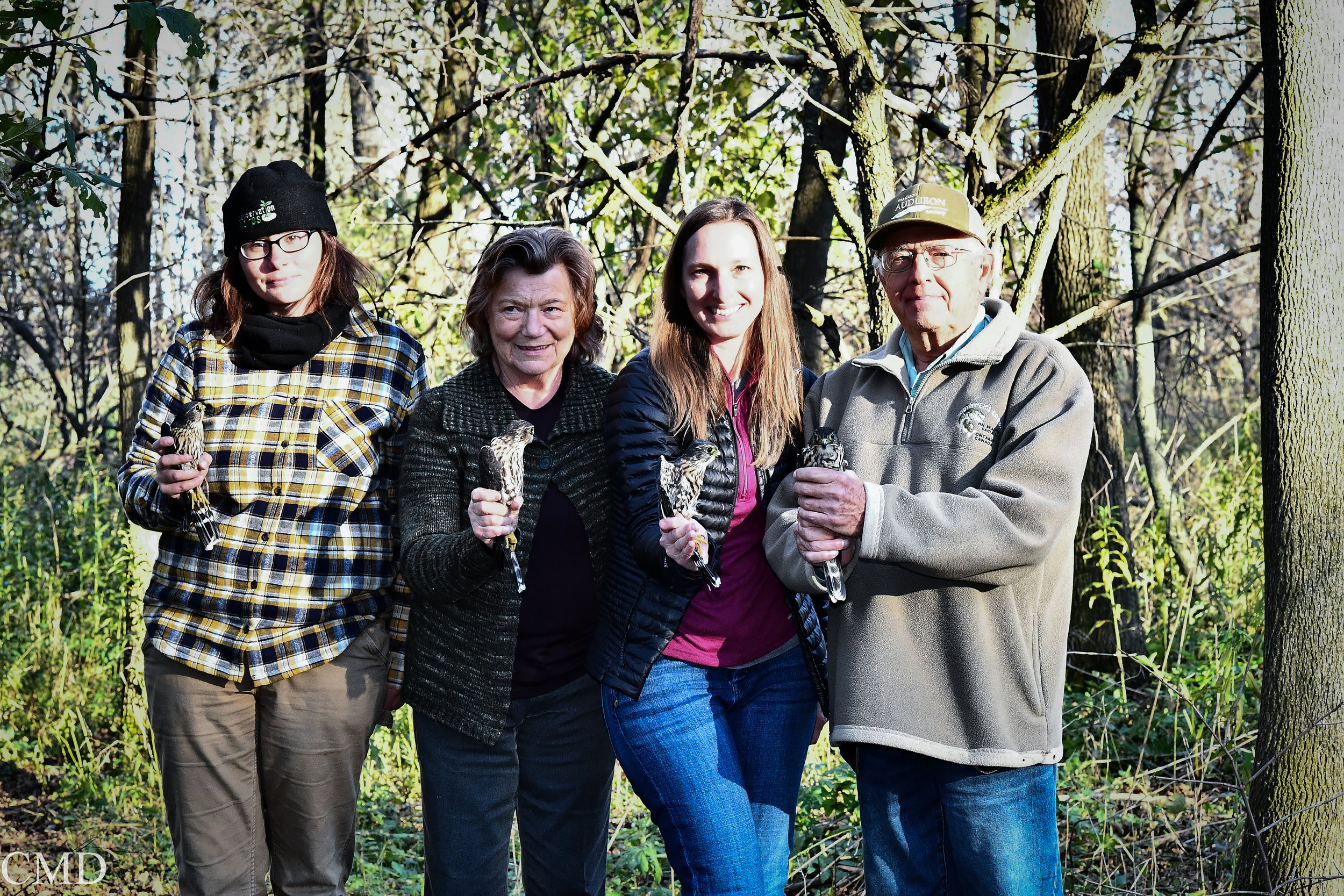It doesn’t look like much when you first walk up to it -- just a small green shack adjacent to a footpath through the woods. It’s only open for four months (August-November) during the year and public access is limited. If you want a tour of this place, you need special permission. I was lucky enough to be a part of a Natural Resources Foundation of Wisconsin field trip group, led by Mark Martin, to experience what goes on at the Cedar Grove Ornithological Research Station. Though it doesn’t look like there’s a lot going on from the outside, trust me, there is.
Cedar Grove Ornithological Research Station lies just off the shore of Lake Michigan outside of Cedar Grove. It’s an operation that began in the 1930s when the Milwaukee Public Museum began banding hawks there. Operations ceased in the 1940s due to the war. In 1950, Dan Berger and Helmut Mueller started banding all species of raptors that flew by on their migratory routes, and that is still the primary purpose of the station today. It is the most well-known banding station with the longest continuous history of banding, and is strictly run by volunteers who have a deep, sustaining passion for birds-of-prey research. Since it started, the research station has captured, banded, and released more than 43,000 hawks and owls.
The moment you walk into the shack, you’re a little overwhelmed with everything around you. Off to the right is a small office fit for a small gathering of people, a desktop cycling through pictures of volunteers holding raptors, and many raptor books. Ahead of you is a small stove and a few end tables and shelves with personal volunteer items and tools. There is also a larger table where the banding takes place. If you step just past the banding table, you see multiple shelves filled with many cans that have raptor tails sticking out of them - a bizarre site to see. Plastered all over the walls are amusing quotes, cartoons, jokes, and newspaper headlines that keep the mood light. You could spend an hour just wandering around reading them all, and a few are sure to put a smile on your face. Tom Meyer, master bander and co-manager of operations, sat all of us down for a bit and told us about the work he does, the history of the center, and what to expect for the day. Within the first few minutes of chatting with Tom, his enthusiasm for the work became obvious.


















